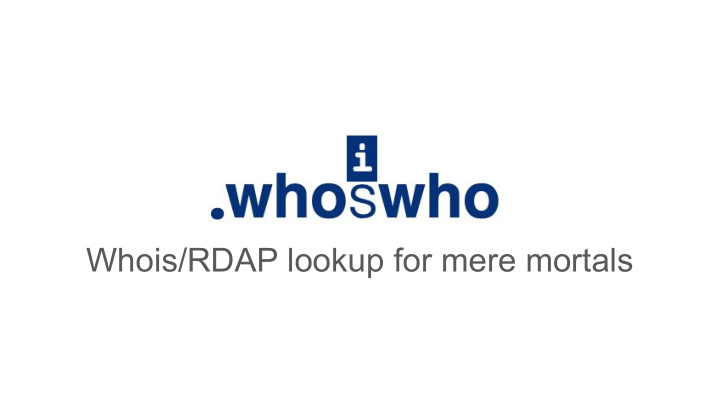



i.whoswho Whois/RDAP lookup for mere mortals
Why should we care?
Case study: ch-co.club A Whatsapp avalanche scam. Lifetime long enough for considerable damage. What if there had been a simply way of checking? http://www.coop. ch-co.club .whoswho ... Domain Name: ch-co.club Updated Date: 2020-05-09T10:08:06Z Creation Date: 2020-05-04T10:08:01Z
Public health fails unless the public participates. So does Internet security.
The Verdict on ch-co.club Whatsapp The DNS industry The user Guilty: Not Guilty Not Guilty Failed to highlight registered domain Guilty: Not Guilty Not Guilty Failed to check registration date Not Guilty: Not Guilty: Guilty: Failed to check holder Failed to check domain identity for lack of tools for lack of tools Failed to provide adequate tools
Something like this could have helped ordinary users (Except the ugly layout of course.) It is difficult to find the right balance of technical language and explicit warnings that all users can understand. And then there is the language problem. But we can certainly do much better than what we do now with Whois / RDAP / RDDS.
Current output of .whoswho lookup Picks up RDAP from Registry Picks up Whois from Registry Picks up RDAP from Registrar Picks up Whois from Registrar RDAP is picked up directly from the user’s browser. Whois is queried via the i.whoswho server.
We’re not there yet The previous slide shows one of the objectives of i.whoswho. For the time being, we only have a plain RDAP-plus-Whois lookup. Lookup by adding .whoswho already works for most TLDs; lookup with HTTPS and systematic DNSSEC will come shortly.
More current output ... strange, it looks like something is missing here… yes, they did not bother adding a LENGTHY ALL CAPS SECTION to the boiler plate!
etc. (Let’s face it: dull old-fashioned Whois is still a breath of fresh air compared to RDAP)
Recommend
More recommend